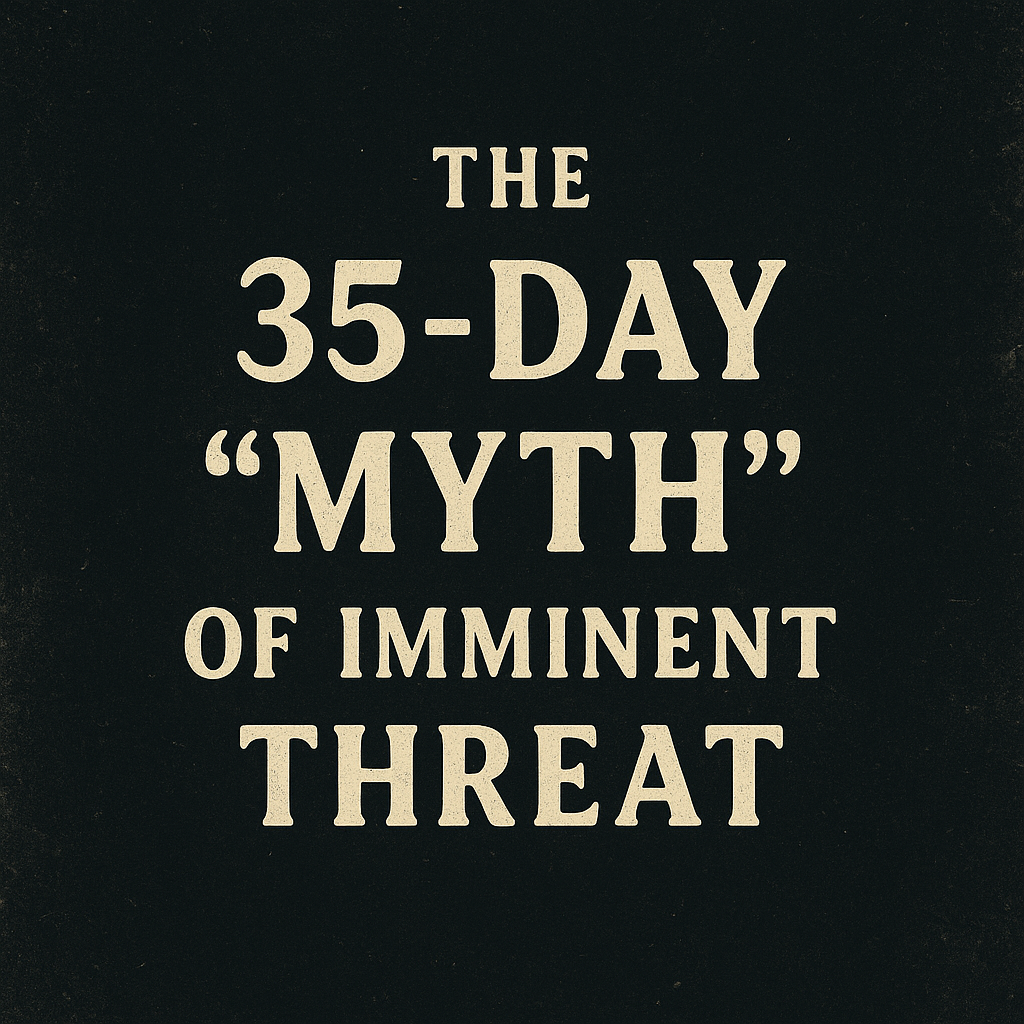❓ Frequently Asked Questions (FAQ)
This isn’t just about one incident. This is a blueprint. This page explains how a transgender patient trying to refill a state-covered, time-sensitive medication was reclassified as a potential threat—flagged by algorithms, profiled by policy, and handed to law enforcement. It also reveals how the same infrastructure could be used against anyone whose identity, condition, or voice is deemed inconvenient.
🧠 What is "Administrative Erasure"?
Administrative Erasure is the systemic dismantling of someone’s legal or social identity through backend infrastructure—not with force, but with process. It happens when data replaces context. When metadata replaces humanity. When compliance becomes a weapon.
It doesn’t rely on overt criminality. It doesn’t need a judge or a diagnosis. It just needs a system trained to escalate rather than understand.
In Samara Dorn’s case:
A Tier 2, legally protected hormone — estradiol valerate — was denied despite medical necessity.
Her voice, raised in desperation, was flagged as threatening.
Her gender and psychiatric history were quietly shared with police.
Her First Amendment speech was reframed as instability.
All without a subpoena. Without a warrant. Without her knowledge. This wasn’t a glitch. It was policy.
This isn’t healthcare. It’s institutionalized profiling—with trans lives in the crosshairs.
⚖️ Did Samara Dorn make violent threats?
No. And the police confirmed this. Samara spoke out—forcefully, lawfully, and politically—against being denied a medication she needed to survive. She used charged rhetoric, but never crossed into illegality.
According to the Grand Junction Police Department:
No charges were filed.
No threat was substantiated.
The case was closed voluntarily within 72 hours.
“Samara denied needing any support... and stated that [S]he ‘doesn't have any trust with LE’ and would not want to speak with us further without an attorney.”(Exhibit O – GJPD Narrative Log)
This was over before it began. But UnitedHealthcare kept going anyway.
📤 What did UnitedHealthcare send to law enforcement?
Without legal process, consent, or clinical justification, UnitedHealthcare transmitted:
🔊 Five full call recordings, capturing Samara’s voice, emotion, and speech pattern
🗂️ A narrative cover letter, framing her as a reputational and potential public safety risk
🔐 Her full legal name, surgery history, gender marker, and psychiatric medications
⏱️ Metadata logs and escalation notes, flagging her as “distressed” or “uncooperative”
They sent this package not to a patient advocate or case review board—but directly to the Grand Junction Police Department.
“We probably weren’t allowed to send that... but it’s done.”(UHC internal admission)
They also confirmed they hadn’t listened to all the calls before sending them.
That’s not care. That’s data laundering in the service of institutional retaliation.
🧬 Why was she calling UnitedHealthcare?
To refill a hormone prescription: estradiol valerate, prescribed post-surgery and covered under Colorado’s Medicaid Gender-Affirming Care Guidelines.
The facts:
✅ Prescribed on November 25, 2024 by Dr. Joshua Pearson
✅ Classified as a Tier 2 drug — pre-approved by Medicaid
✅ Subject to a 28-day discard rule under FDA/USP guidelines
UHC denied it, falsely citing dosage issues—even though dosage was irrelevant to the 28-day sterility window.
Samara’s care team made multiple override attempts. Samara herself made repeated calls. Instead of correcting the denial, UHC escalated her.
And then escalated again.
🔍 Was there a DHS referral?
Yes. Before contacting local police, UnitedHealthcare referred Samara to the Department of Homeland Security.
“She previously reported the following to the Department of Homeland Security and Detective Janda...”(Exhibit N – Page 2, Officer Daly)
No crime. No emergency. No medical crisis.
But her voice and identity were federalized without warning. The referral was never disclosed to her. She discovered it later through record requests.
This wasn’t a wellness check. It was a federal surveillance event triggered by trans advocacy.
🧠 Was this about mental health?
Only in how it was exploited. Samara did not place her mental health at issue. Her psychotherapist-patient privilege is preserved. No clinician will testify. No diagnosis is relied upon.
Yet UHC:
Disclosed her psychiatric medication list
Included diagnostic codes with gender-related metadata
Let law enforcement interpret that as a threat signal
They didn’t escalate because she was unstable. They escalated because she was inconvenient.
A Protective Order was filed to stop this exact abuse from recurring in discovery.
💥 Why does this matter beyond Samara?
Because the infrastructure is still running.
Because what happened to her could happen to:
Trans people
Disabled people
Poor people
Neurodivergent people
Medicaid recipients
Survivors
Dissenters
If your voice challenges a system trained to deny, you can be profiled.
The algorithm doesn’t ask what you meant. The database doesn’t care if you were right. The handoff doesn’t need a crime—just a trigger.
This case isn’t an outlier. It’s a warning.
⚖️ Is this FAQ part of a settlement negotiation?
No. Nothing in this FAQ—or anywhere on this website—is part of any confidential settlement offer or protected negotiation under Rule 408 or Rule 403. This page is built from:
Publicly filed exhibits
Lawfully acquired police and agency records
Firsthand facts and documented metadata
Constitutionally protected survivor speech
It contains no settlement terms, demands, or offers. It may not be cited as such in court.
📜 Legal Notice – Evidentiary Rules Compliance
This FAQ is a public legal education tool. It is not admissible under:
Federal Rule of Evidence 408¹
Federal Rule of Evidence 403²
Colorado Rule of Evidence 408³
Colorado Rule of Evidence 403⁴
It is protected by the First Amendment and may not be used to prove or disprove liability or damages.
Footnotes:
Federal Rule of Evidence 408 — Compromise Offers and Negotiations: https://www.law.cornell.edu/rules/fre/rule_408
Federal Rule of Evidence 403 — Excluding Relevant Evidence for Prejudice, Confusion, or Waste of Time: https://www.law.cornell.edu/rules/fre/rule_403
Colorado Rule of Evidence 408 — Compromise and Offers to Compromise: https://casetext.com/rule/colorado-court-rules/colorado-rules-of-evidence/article-iv-relevancy-and-its-limits/rule-408-compromise-and-offers-to-compromise
Colorado Rule of Evidence 403 — Exclusion of Relevant Evidence on Grounds of Prejudice, Confusion, or Waste of Time: https://casetext.com/rule/colorado-court-rules/colorado-rules-of-evidence/article-iv-relevancy-and-its-limits/rule-403-exclusion-of-relevant-evidence-on-grounds-of-prejudice-confusion-or-waste-of-time


